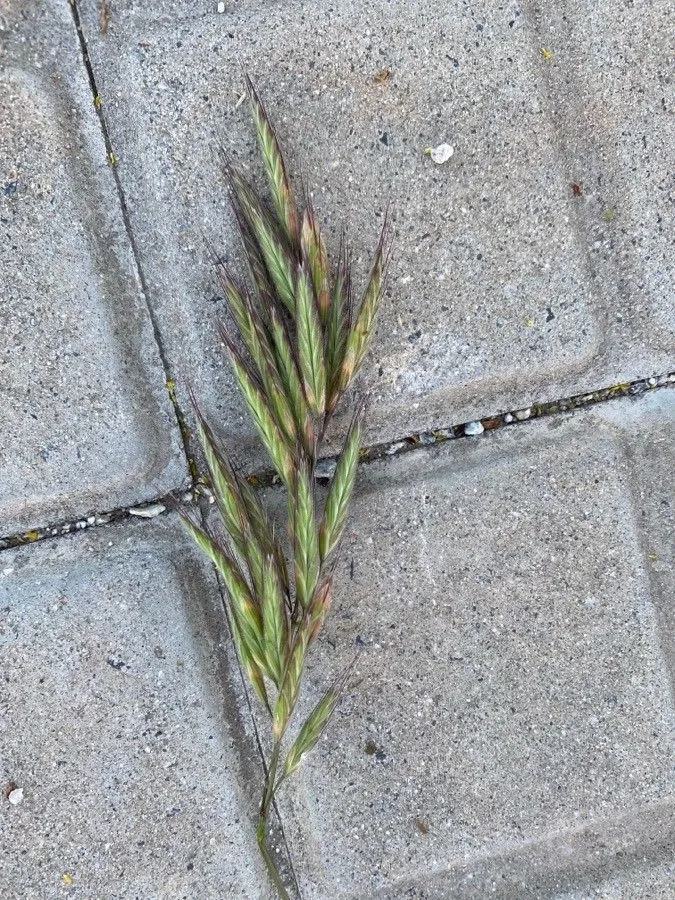
Author: Roth
Bibliography: Catal. Bot. 1: 18 (1797)
Year: 1797
Status: accepted
Rank: species
Genus: Bromus
Vegetable: Unknown
Observations: Medit. to Xinjiang and Pakistan
Mediterranean brome, scientifically known as Bromus lanceolatus, is a notable grass species belonging to the family Poaceae. First described in 1797 in the “Catal. Bot. 1: 18” by Roth, this plant has since been recognized for its extensive geographical distribution and ecological significance.
The plant finds its natural habitat ranging from the Mediterranean region all the way to Xinjiang in China and parts of Pakistan. This extensive range underscores its adaptability to various climates and soil conditions, making it a resilient species in both arid and semi-arid environments.
Mediterranean brome is identifiable by its distinct morphological features typical of the Bromus genus. The plant exhibits a robust growth pattern, often forming dense tufts. The leaves are narrow and linear, contributing to its graceful yet hardy appearance. The flowering structure, or inflorescence, typically comprises a loose panicle, with individual spikelets that are slightly compressed and awned at the tips. This structural characteristic not only aids in the plant’s reproductive success but also contributes to its recognition among botanists and plant enthusiasts.
Ecologically, Bromus lanceolatus plays a significant role in the ecosystems it inhabits. It often serves as a crucial forage grass for grazing animals, providing essential nutrients and energy. Additionally, its adaptability allows it to thrive in disturbed soils, playing a key role in soil stabilization and prevention of erosion.
The botanical significance of Mediterranean brome extends beyond its ecological roles. For researchers and naturalists, it represents an interesting subject of study due to its adaptability and resilience, offering insights into grassland management and conservation strategies in varying climatic zones. Its presence in diverse regions highlights not only the ecological connectivity across different landscapes but also the botanical richness and the vital role such species play in their respective environments.
In summary, Bromus lanceolatus, or Mediterranean brome, is a resilient and ecologically important grass species with a broad geographical distribution. Its characteristic features, ecological functions, and adaptability make it a key species for study, conservation, and utilization in various environmental contexts.
Deu: großährige trespe, lanzett-trespe
Dan: lancet-hejre
Eng: large-headed brome, mediterranean brome, large-head brome, lanceolate brome
Lav: aszobain
Swe: skruvlosta
Est: suuretühane luste
Fra: brome lancéolé, brome à grands épillets
Cym: pawrwellt penfawr
En: Mediterranean brome, Large-head brome, Large-headed Brome, Lanceolate brome, Mediterannean Brome
Ca: Serrafalc lanceolat
Da: Lancet-hejre
Et: Suuretühane luste
Fr: Brome lancéolé, Brome à grands épillets
De: Großährige Trespe, Lanzett-Trespe, Lanzettblütige Trespe
He: ברומית אזמלנית
It: Forasacco lanceolato
Lv: Aszobain
Es: Barba de macho, Espiguilla de calvero
Sv: Skruvlosta
Cy: Pawrwellt Penfawr
Taken Aug 16, 1997 by Tela Botanica − Liliane Roubaudi (cc-by-sa)
Taken May 23, 2011 by Tela Botanica − Mathieu MENAND (cc-by-sa)
Taken Oct 3, 2009 by Tela Botanica − Bertrand BUI (cc-by-sa)
Taken Jun 11, 2012 by Tela Botanica − Marie Therese GOUPIL (cc-by-sa)
Taken May 13, 2021 by Mon Lu Jorge (cc-by-sa)
Taken May 22, 2011 by Tela Botanica − Bertrand BUI (cc-by-sa)
Taken Jun 3, 2016 by serre (cc-by-sa)
Taken Jun 3, 2016 by serre (cc-by-sa)
Taken Apr 1, 2021 by Antonio López Rodríguez (cc-by-sa)
Taken Apr 1, 2021 by Antonio López Rodríguez (cc-by-sa)
Taken Jul 27, 2015 by Tela Botanica − Maxime Pluchino (cc-by-sa)
Taken Jul 27, 2015 by Tela Botanica − Maxime Pluchino (cc-by-sa)
Taken Jul 27, 2015 by Tela Botanica − Maxime Pluchino (cc-by-sa)
Taken Apr 2, 2021 by Martaphyta (cc-by-sa)
Taken Apr 27, 2020 by Pacheco gallango jugar a Pokémon avatar condiciones de uso David (cc-by-sa)
Taken May 15, 1992 by Photoflora – Jean-Luc TASSET (©)
Taken May 15, 2017 by Photoflora – Benoit BOCK (©)
Taken May 15, 2017 by Photoflora – Benoit BOCK (©)
Taken May 15, 2017 by Photoflora – Benoit BOCK (©)
Taken May 24, 2009 by Tela Botanica − Bertrand BUI (cc-by-sa)
Taken Jan 1, 1970 by Photoflora – L’Abbé COSTE (©)
Taken May 15, 2017 by Photoflora – Benoit BOCK (©)
Taken May 22, 2011 by Tela Botanica − Bertrand BUI (cc-by-sa)
Taken May 22, 2011 by Tela Botanica − Bertrand BUI (cc-by-sa)
Taken May 22, 2011 by Tela Botanica − Bertrand BUI (cc-by-sa)
Taken May 15, 2017 by Photoflora – Benoit BOCK (©)
Taken May 15, 2017 by Photoflora – Benoit BOCK (©)
© copyright of the Board of Trustees of the Royal Botanic Gardens, Kew.
© copyright of the Board of Trustees of the Royal Botanic Gardens, Kew.
© copyright of the Board of Trustees of the Royal Botanic Gardens, Kew.
Family: Myrtaceae Author: (F.Muell.) K.D.Hill & L.A.S.Johnson Bibliography: Telopea 6: 402 (1995) Year: 1995 Status:…
Family: Rubiaceae Author: Pierre ex A.Froehner Bibliography: Notizbl. Bot. Gart. Berlin-Dahlem 1: 237 (1897) Year:…
Family: Sapindaceae Author: Koidz. Bibliography: J. Coll. Sci. Imp. Univ. Tokyo 32(1): 38 (1911) Year:…
Family: Asteraceae Author: A.Gray Bibliography: Pacif. Railr. Rep.: 107 (1857) Year: 1857 Status: accepted Rank:…
Family: Fabaceae Author: Medik. Bibliography: Vorles. Churpfälz. Phys.-Ökon. Ges. 2: 398 (1787) Year: 1787 Status:…
Family: Aspleniaceae Author: (Cav.) Alston Bibliography: Bull. Misc. Inform. Kew 1932: 309 (1932) Year: 1932…